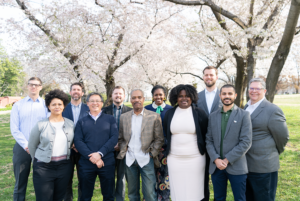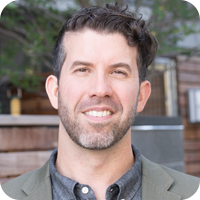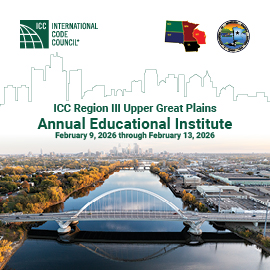
Building a green code program from the ground up

In late 2012, Washington, D.C., was in the middle of a major code adoption cycle, the first in almost five years. The mayor-appointed, private-public sector code adoption committee, the Construction Codes Coordinating Board, was excited yet nervous about the adoption of the 2012 International Green Construction Code (IgCC). At that point, no other major jurisdiction had adopted the 2012 IgCC (with all major chapters) as a mandatory code.
Even though the District of Columbia was a national green building leader that had pioneered the Green Building Act of 2006, and had a progressive development community that had embraced LEED certification as a standard practice across larger buildings, this gave them hesitation. Construction in the District was booming, and the code board was wary of assigning the building department additional authority and responsibilities that might slow development, especially given the building department did not have dedicated or experienced green building staff, and the code contained elements that were complicated and potentially unenforceable.
It was in this climate that I took my first job in codes as a green code official, establishing what would become the Green Building Division at the District of Columbia’s Building Department, the Department of Consumer and Regulatory Affairs (DCRA).
Today, the Green Building Division has 15 staff members focused on effective, consistent code enforcement of the District’s progressive and innovative green building and solar codes and policies. Using time-tested code enforcement methods, our green plan reviewers conduct an “energy code review” and “green code review” alongside other code disciplines as part of our digital plan review process. Our green inspectors conduct a “green code rough-in” and “green code final” inspection during construction, as well as energy code inspections, which are integrated into pre-existing inspections (e.g., foundation inspection) or called out distinctly (e.g., “energy final”).
At the end of construction our team reviews the certificate of occupancy for compliance with the green code (e.g., preliminary commissioning report, construction waste management) and places conditions on projects that have post-construction requirements, such as a final commissioning report or certification to a third-party green building certification program such as LEED.
The Green Building Division is also involved in green building policy and code development, training and education, consumer protection, community outreach and more. We serve as an ambassador to project teams utilizing emerging green technology (e.g., solar, tall wood buildings, battery storage) and/or pursuing an ambitious goal such as building a net-zero energy building. Our division is at the heart of the District’s sustainability and green building program initiatives, playing a vital role in ensuring the District reaches its ambitious 2050 carbon neutrality and resiliency goals, and becoming the healthiest, greenest and most livable city in the country.
As a green code official, I have learned a lot over the past six years on and continue to grow on a daily basis. In this series, it is my goal to give you useful information that you can bring back to your jurisdiction as you create your own program; leapfrogging many of the challenges that my team initially faced.
Each article will provide detailed insights from the experiences and challenges the District faced while developing and enforcing the District’s green and energy codes. We’ll cover technical content such as advanced green and energy policy (e.g., net-zero energy codes), as well as practical topics such as funding a program, staffing structure and code enforcement.
As we commonly say around the office, “the devil’s in the details”. With that in mind, let’s take a detailed look at the District’s Green Building Fund — the cornerstone of the District of Columbia’s Green Building Division.
For the next article, we’ll take a closer look at 2013 DC Green Construction Code and how it is enforced.
The DC Green Building Fund
Access to consistent funding is one of the first major challenges a jurisdiction faces when creating an effective green code enforcement program. Without funding to hire staff, a jurisdiction cannot successfully meet their green building or sustainability goals. The green and energy codes are too complex, and effective enforcement is too time intensive to be layered onto the jobs of existing code officials, most of who are already juggling a lot of work. There needs to be designated green code officials that are hired to focus specifically on the enforcement.
The Green Building Division is funded by the “Green Building Fund,” a special-purpose revenue fund created under the Green Building Act of 2006, which brings in nearly $2 million annually from an additional permit fee (Table 1). In the District, the fund is fee’d as follows:
(1) New construction — an additional $0.0020 per square foot.
(2) Alterations and repairs exceeding $1,000 but not exceeding $1 million — an additional 0.13 percent of construction value; and
(3) Alterations and repairs exceeding $1 million — an additional 0.065 percent of construction value.

The Green Building Fund allowed the building department to hire green code officials quickly with competitive salaries that attracted talented professionals and experts in the field – a necessity for a new program. It also allowed for energy and green code research projects, green building trainings, and educational tools to be developed to assist the private sector in learning and implementing the codes. Helpful documents that are used daily by the public and private sector, such as the combined DC Green Construction Code (the 2012 IgCC combined with local DC Construction Code Amendments), were paid for by the Green Building Fund. Without the Green Building Fund, the Green Building Division would not be the robust program it is today. To view and download many of the green code tools and trainings that DC has created with the Green Building Fund, go to www.buildgreendc.org.
¹The DC Green Building Fund is part of the Green Building Act of 2006. For legal language, please see Sections “§ 6-1451.07. Green Building Fund” and “§ 6-1451.08. Green building fee”.







